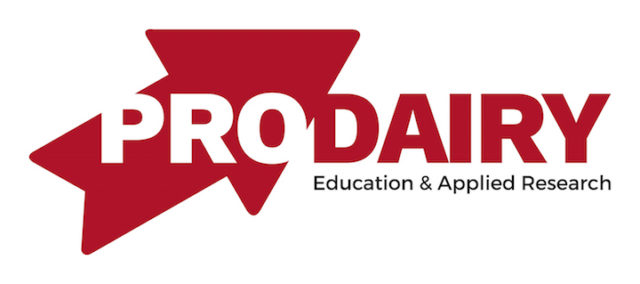The last of four Senate Ag Committee hearings on the 2012 Farm Bill held on March 15 evaluated the need for and cost effectiveness of risk management tools available to farmers and how the federal government can provide appropriate risk management tools while making the best use of limited resources. Here are excerpts of testimony presented during the hearing.
“Being a grower is full of risk and without crop insurance, it becomes a gamble, a roll of the dice. Our operation, our livelihoods are too much to gamble on. We believe strongly in crop insurance as a safety net for our operation.”
Hope Hills, blueberry grower
Bangor, Michigan
“As you’re well aware, recent cuts to crop insurance and the renegotiation of the SRA have resulted in $12 to $20 billion in savings. Additional cuts will likely result in increased premiums to producers or reductions in the products available or the level of service companies are able to provide.
"We simply cannot afford additional cuts in today’s high-risk market place … in addition, in no case should the crop insurance tools, which are purchased by the producer, be encumbered with environmental regulation, conservation requirements, or other conditions that fall out of the scope of insurance.”
Jarvis Garetson, farmer
Copeland, Kansas
“As ASA looked at program alternatives to help farmers manage risk, we concluded that the best complement to income protection under the existing crop insurance program would be a revenue-based program that partially offset losses that exceed a specified revenue threshold.
"This approach would make significant changes to but is similar to the current ACRE program, which has had limited participation due to its complexity, reductions in direct payments and marketing loan rates, and a state-level revenue-loss trigger.”
Steve Wellman, president
American Soybean Association, Syracuse, Nebraska
“The extreme volatility in the commodity markets experienced over the past five years as well as the impact of major flooding in the Midwest and severe drought conditions in the South remind us that the risks in farming are expansive and immediate.
"The corn industry has certainly enjoyed considerable improvement in prices, but growers continue to confront the pressures of rising input costs and increasing land rents as competition for inputs bids up prices.
"Federal crop insurance, especially revenue protection coverage, has proven to be the most flexible and market-oriented risk management tool for protecting family farm income; it has permitted growers to insure adequate revenue to cover that year’s cost of operation.”
Pam Johnson, first vice president
National Corn Growers Association, Floyd, Iowa
“While crop prices have been very strong recently, the cost of production has also increased, with high input costs making it more costly to farm. For example, the average variable cost to plant and harvest an acre of corn has doubled in nominal terms between 1997 and 2011, and increased by over 80 percent for cotton.
"These high input costs increase the financial risk involved in agricultural production, and further underscore the need for a strong safety net.”
Michael Scuse, acting undersecretary
Farm and Foreign Agricultural Services, U.S. Department of Agriculture
“As development of the 2012 Farm Bill progresses, the crop insurance delivery system is in a unique situation. Companies are still processing and delivering record payouts to farmers and ranchers for their 2011 losses.
"At the same time, crop prices remain elevated far above historic levels, and projections show that producers will continue to take advantage of that and push themselves to plant to capacity. This indicates the need for crop insurance is likely to rise, as will insurers’ risk exposure.
"With this growth comes an increasing sensitivity to additional changes to the program and the delivery system – because the industry’s administration and organizational infrastructure continues to be pushed to the limit.”
Steve Rutledge, chairman, president and CEO
Farmers Mutual Insurance Company, West Des Moines, Iowa
“Rather than creating a less-tailored version of crop insurance with the hope it will succeed like crop insurance, we believe Congress should look for things that crop insurance does not do well, and fill those gaps.”
Ruth Gerdes, farmer and crop insurance agent
Auburn, Nebraska
“Government subsidization of the federal crop insurance program is absolutely necessary to maintain affordable and competitive policies for America’s farmers. The extremely high level of risk involved with production agriculture prohibits private entities from writing agricultural policies, which have extremely limited and risky profit potential.
"Without government involvement, private companies would target high-profit, low-risk areas and leave highly vulnerable regions without sufficient coverage options.
"As the crop insurance structure is now organized, private companies are able to write policies for regions and states that have historically shown losses. The public-private partnership ensures that all areas have equitable access to crop insurance.”
Erik Younggren, president
National Association of Wheat Growers, Hallock, Minnesota
“It is NFU’s belief that farmers should not receive support in the good times, but that farm policy should instead provide economic security to farmers, who have little market power, in bad times. Our nation’s farmers need a more effective and fiscally responsible safety net to mitigate the effects of weather and market volatility and to achieve our food and energy security goals.”
Roger Johnson, president
National Farmers Union, Washington, DC
“While Farm Bureau believes a single program option should be extended to all crops, the program needs to include the continuation of a multi-legged stool approach to provide a fair, flexible and effective safety net. Two legs of that stool should consist of a strong crop insurance program and continuation of the marketing loan program with modifications to better reflect market conditions.
"Marketing loans and the crop insurance program provide protection at the individual farm level. We believe the third leg of the stool should provide catastrophic revenue loss protection at the county level, or at the crop reporting district level if county level data is unavailable, rather than the farm level.”
Bob Stallman, president
American Farm Bureau Federation, Washington, DC
“FFA and agricultural education have a major role in ensuring we have the producers, researchers, entrepreneurs and innovators to meet the challenges we face. That’s why Secretary Vilsack invited last year’s national FFA officer team to provide him with recommendations for the farm bill.
"After consulting with FFA members and stakeholders, the officers delivered their report to the Secretary last December.
"[It] comes down to these key points: USDA and other federal agencies should assist beginning farmers to start or continue in production agriculture; USDA should help transition farms from older farmers to younger or beginning farmers who may not come from a farm; USDA should help keep young people in rural communities and make rural communities an even more important part of our nation’s economy and society; USDA should strengthen the capacity of agricultural education to produce more students who pursue production agriculture and related careers.” PD
Ryan Best, president
FFA, Portales, New Mexico 





